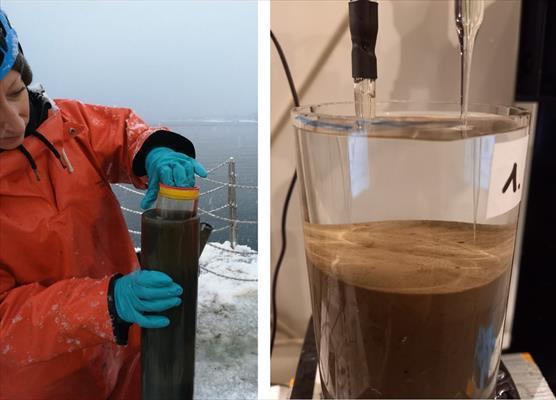Background
Nitrous oxide (N2O) is a powerful greenhouse gas that is naturally produced and partly consumed by the microbial processes nitrification, denitrification, nitrifier denitrification, and potentially even dissimilatory nitrate reduction to ammonium.
Coastal sediments contribute considerably to marine N2O cycling due to their high loading of organic matter and nutrients, yet the significance of each microbial process is still uncertain owing to methodological constrains in qualitative and quantitative assessments. This is a fundamental gap for assessing present, but even more importantly, future coastal N2O cycling, considering that the microbial processes involved are proposed to respond differently to changes in environmental conditions based on their specific metabolic requirements.
In the coastal Baltic Sea, where increasing climate change pressures meet an ecosystem struggling with long-term eutrophication, rapid changes in environmental conditions are expected for the very near future, which is why mechanistic knowledge on benthic N2O cycling is urgently needed.
Aim
By using a state-of-the-art multidisciplinary approach that combines micro-sensor techniques with microbial functional gene expressions, I aim to disentangle the contribution of the different microbial processes to net N2O production in coastal sediment representative for the northern Baltic Sea
- (i) under present and future eutrophication status and water temperature, and
- (ii) over seasonal changes in environmental conditions.
The ultimate aim is to assess whether the coastal Baltic Sea will become a sink or source of N2O in the future.
These objectives are approached via benthic mesocosm experiments and seasonal field sampling at Tvärminne Zoological Station, Finland. The data and mechanistic understanding obtained will be applied in
- (iii) a coupled microbial reactive transport model to simulate scenarios of future benthic N2O cycling and
- (iv) a comparison with a non-Baltic coastal system to interpret the Baltic findings in a wider context.

Field- and lab work: sampling of coastal sediment to obtain high-resolution pore-water concentration profiles of nitrous oxide and oxygen, using micro-sensors. Photos © D. Hellemann
The knowledge gained in this project will add to science-based decision-making regarding mitigation measures for future greenhouse gas emissions and ecosystem degradation in the coastal Baltic Sea.
Additional info
- Postdoctoral researcher Dana Hellemann,
Finnish Environment Institute
firsname.lastname@syke.fi, +358 (0) 503067238